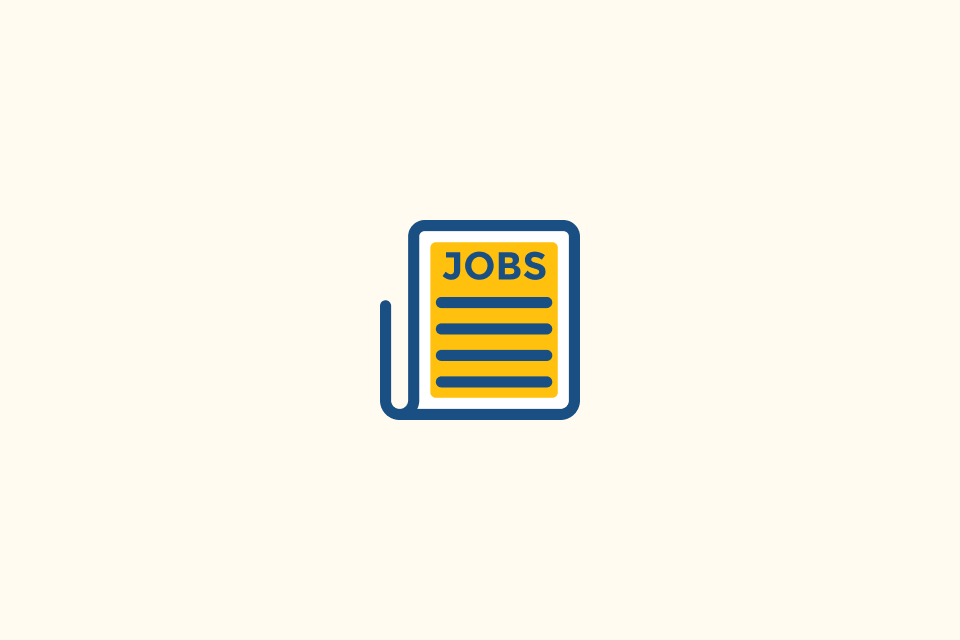German: Your Guide to Europe's Most Spoken Native Language

TABLE OF CONTENTS
Introduction: Why German, Why Now
German is the most widely spoken native language in the European Union and a practical passport to careers and culture across Central Europe. It is the language of patent filings and engineering manuals, of Goethe and Hesse, of symphonies, startups, and Mittelstand manufacturers. If you plan to study in Europe, work with DACH markets, read philosophy in the original, or simply travel with deeper connection, German repays the effort. Learners often discover that once the first hurdles—sounds, word order, and noun gender—are in place, the rest of the system becomes surprisingly predictable. Teams building products make a similar discovery: good results come from a few principled decisions early on about tone, typography, and space for longer words.
This guide tells the story of German as it is used today. We will move from where it’s spoken, to how it developed, to how its writing, sound, and grammar work together. Along the way you’ll see where learners typically stumble, how to build momentum, and how to handle translation and localization with confidence.
You’ll learn:
- Where German is used across D‑A‑CH and how regional varieties differ
- How its writing and sounds actually work (umlauts, ß, ch, r, stress)
- A clear mental model for word order and cases
- How compounds, cognates, and false friends behave
- Which localization pitfalls to avoid and how to test for them
Where German Is Spoken and How It Varies
German is a pluricentric language: there is a shared standard, but it is shaped locally in Germany, Austria, and Switzerland. You will hear Standard German on national news, read it in government forms, and use it comfortably across borders. Orthography reforms have unified spelling to a large degree, yet habits remain. In Switzerland, for example, the letter ß has largely given way to ss, and everyday words in signage can differ—Velo where Germans would say Fahrrad, Billet where others would expect Fahrkarte. Austria keeps its own favorites too; an apricot is a Marille in Vienna and an Aprikose in Berlin.
Beneath the shared standard, a living quilt of dialects stretches across the German‑speaking world: Alemannic in Switzerland and parts of southern Germany, Bavarian in the southeast, Swabian, Franconian, and Low German in the north. Some dialects diverge so far that they feel like separate languages to outsiders, yet speakers move fluidly between dialect and standard depending on context. For a learner, this is good news. Start with Standard German, accept that accents and a handful of words will shift as you cross borders, and you will be understood everywhere you go.
Regional snapshots:
- Switzerland: ss instead of ß; vocabulary like Velo “bike,” Billet “ticket,” Trottoir “sidewalk”
- Austria: Marille “apricot,” Jänner “January,” Erdäpfel “potatoes,” Topfen “quark”
- Germany: widespread ß; Aprikose, Fahrrad, Fahrkarte, Bürgersteig as standard choices
A Brief History: From Luther to Duden
German grew out of the West Germanic branch that also gave us English and Dutch. Over the first millennium, the High German consonant shift reshaped the sound system—p became pf or f, t became z or s, k became ch—creating the forms that distinguish High German from Low German and other West Germanic languages.
By the sixteenth century, Martin Luther’s translation of the Bible circulated a practical written standard that reached far beyond scholars and clergy. His language, rooted in the Saxon chancellery style, became accessible to merchants, artisans, and the growing reading public. In the centuries that followed, grammarians and lexicographers—culminating in Konrad Duden’s 1880 orthographic dictionary—codified usage for schools, publishers, and public life.
The Hanseatic League had already spread Low German across the Baltic as a lingua franca of trade, but High German’s association with print, education, and later, the unified German state, secured its dominance. Meanwhile, Austrian German developed under Habsburg influence, and Swiss German dialects maintained their distinctiveness in the confederation’s isolated alpine valleys.
Modern reforms in 1996 and 2006 tweaked spelling and hyphenation rules and clarified when ß or ss should appear. The result is a contemporary standard that feels remarkably consistent from Hamburg to Vienna to Zurich, with local color adding character rather than confusion.
Writing and Pronunciation Essentials
The written system gives you reliable signals once you learn its pieces. Umlauts—ä, ö, ü—mark fronted vowels that change both sound and meaning; schon “already” and schön “beautiful” are not the same word. The letter ß, called Eszett or scharfes S, represents a voiceless [s] after a long vowel or diphthong and sits where ss would otherwise appear: Straße “street,” weiß “white.” When you lack the keys, ae/oe/ue and ss are acceptable substitutes, and Swiss Standard German uses ss exclusively.
Two flavors of ch matter early. After front vowels (i, e, ü, ö, ä), the ich‑Laut is a soft [ç] as in ich, nicht, Bücher. After back vowels (a, o, u) or at the end of syllables, the ach‑Laut becomes a darker [x]—the friction you hear in Bach, noch, Buch. The letter r also varies: many regions pronounce it as a uvular fricative or trill [ʁ] or [ʀ], while an unstressed ‑er often relaxes into a schwa [ɐ], so Vater sounds like Vatɐ.
Stress typically lands on the root’s first syllable: ˈlernen, ˈArбeit, verˈstehen. But separable prefixes deserve attention—ˈanrufen places the emphasis at the front, and in main clauses it splits: ich rufe dich ˈan. Inseparable prefixes like be‑, ge‑, er‑, ver‑, zer‑ never take stress: beˈsuchen, verˈstehen.
One visual habit sets German apart: all nouns are capitalized. Far from being a quirk, this turns dense paragraphs into navigable terrain, letting your eye pick out the participants and objects at a glance.
In practice:
- Umlauts change meaning: schon vs. schön
- ß follows long vowels/diphthongs; CH uses ss only
- ch splits into ich [ç] vs. Bach [x]
- r varies by region; ‑er often reduces to schwa
- All nouns capitalized: die Sprache, das Auto, der Tisch
Grammar in Motion
German grammar looks forbidding on the surface, then resolves into a handful of rules that repeat. Nouns carry one of three grammatical genders—masculine, feminine, or neuter—which you learn most efficiently with their articles: der Tisch, die Lampe, das Buch. Four cases mark a noun’s role in the sentence: the subject stands in the nominative, direct objects in the accusative, indirect objects in the dative, and possession or certain prepositions trigger the genitive. Prepositions reliably signal which case to expect, so phrases like mit dem Auto (Dat.) and für einen Freund (Akk.) become reflexes.
Word Order: The V2 Rule and Beyond
In main clauses, the finite verb occupies the second position by element, not by raw word count. You can foreground time or place—Heute gehe ich ins Kino—and the verb still holds the beat. This creates a rhythmic predictability that learners come to rely on.
Subordinate clauses, introduced by words like weil, dass, obwohl, or wenn, send the verb to the end: …, weil ich keine Zeit habe. Longer sentences often form a bracket (Satzklammer), with an auxiliary or modal near the front and a participle or infinitive closing the thought:
- Ich habe es gestern gekauft. (Perfekt)
- Er will morgen anfangen zu arbeiten. (modal + infinitive)
- Sie muss die Arbeit bis Freitag abgeschlossen haben. (modal + Perfekt infinitive)
Adjective Endings: The Three-Case System
Adjective endings shift based on whether they follow a definite article (der/die/das), an indefinite article (ein/eine), or no article at all. Here’s the pattern for masculine nouns in nominative and accusative:
| Context | Nominative | Accusative |
|---|---|---|
| Definite | der alte Mann | den alten Mann |
| Indefinite | ein alter Mann | einen alten Mann |
| Zero article | alter Wein | alten Wein |
The logic: when the article already shows case and gender clearly, the adjective takes a “weak” ending (often ‑e or ‑en). When there’s no article or minimal signal, the adjective must carry the information with a “strong” ending (‑er, ‑e, ‑es).
Practice frame: Take one common adjective (groß, neu, alt) and drill it through all three article types in one case before moving on.
Verbs: Tense, Aspect, and the Perfect-Präteritum Divide
German verbs come in two prefix flavors. Many carry prefixes that either fuse with the verb (besuchen, verstehen, erzählen) or split off in main clauses (anrufen → ich rufe dich an; aufstehen → ich stehe um 7 Uhr auf). In conversation, the Perfekt tense, formed with haben or sein and a past participle, does most of the work for completed actions:
- Ich habe das Buch gelesen.
- Sie ist gestern nach Berlin gefahren.
The Präteritum (simple past) appears for a handful of common verbs like war, hatte, konnte, wollte in speech, but dominates in written narratives, news, and formal reports. This register split matters: using Präteritum in casual conversation sounds stiff, while overusing Perfekt in a business report feels informal.
Key patterns:
- Article+noun pairs: der Tisch, die Lampe, das Buch
- V2 in main clauses: Heute gehe ich ins Kino. / Morgen arbeite ich von zu Hause.
- Verb-final in subclauses: …, weil ich keine Zeit habe.
- Sentence bracket: Ich habe es gestern gekauft. / Er will morgen anfangen.
- Separable vs. inseparable: anrufen → ich rufe dich an; besuchen → ich besuche dich
Words: Building, Borrowing, and Misleading Friends
German loves to build new words out of old parts. Krankenhaus is literally a “sick‑house” and means hospital; Handschuh is a “hand shoe” and keeps your fingers warm; even a fearsome creature like Geschwindigkeitsbegrenzung (speed limit) breaks into Geschwindigkeit + ‑s‑ + Begrenzung. Once you start spotting the glue letters (‑s‑, ‑n‑, ‑es‑) that bind compounds, long words lose their intimidation and become puzzles you can solve.
Compound segmentation:
- Krankenhaus = krank + Haus “hospital”
- Handschuh = Hand + Schuh “glove”
- Geschwindigkeitsbegrenzung = Geschwindigkeit + ‑s‑ + Begrenzung “speed limit”
- Donaudampfschifffahrtsgesellschaftskapitän = Donau + Dampf + Schiff + Fahrt + ‑s‑ + Gesellschaft + ‑s‑ + Kapitän “Danube steamship company captain” (a classic example, rarely used in practice)
English offers help in the form of cognates—Information, Telefon, Problem, Universität—but it also lays traps. Bekommen means “to receive,” not “to become,” and a Gift is poison, not a present. Chef is your boss (though younger Germans increasingly use Boss), aktuell means current, eventuell means possibly, and a Handy is the everyday word for a mobile phone.
Common false friends:
| German | Means | Not |
|---|---|---|
| bekommen | to receive | not “to become” (use werden) |
| Gift | poison | not “present/gift” (use Geschenk) |
| Chef | boss/manager | not “chef/cook” (use Koch) |
| aktuell | current, up-to-date | not “actually” (use eigentlich) |
| eventuell | possibly, perhaps | not “eventually” (use schließlich) |
| Handy | mobile phone | not “handy/convenient” (use praktisch) |
| sensibel | sensitive | not “sensible” (use vernünftig) |
Politeness Through Pronouns
Politeness works through pronouns. Sie (always capitalized) is the formal “you” and du the informal. Modern apps and consumer brands often address customers with du; B2B sites and official communication lean toward Sie. Choose one tone at the start of a project and keep verbs, pronouns, and possessives aligned all the way through. Mixing them mid-text feels jarring and unprofessional.
- Formal: Können Sie mir helfen? / Wie geht es Ihnen?
- Informal: Kannst du mir helfen? / Wie geht’s dir?
A Practical Path from Zero to Fluent Reading
A strong start focuses on sound, structure, and small wins. In your first month, train the new sounds (especially the two ch’s and the umlauts), learn a handful of high‑frequency verbs (sein, haben, werden, können, müssen, wollen), and get the feel of verb‑second word order by speaking simple sentences daily. Pair a structured course such as Deutsche Welle’s “Nicos Weg” with short, friendly input: Easy German on YouTube, a graded reader like Café in Berlin, and five minutes a day with Anki using a deck like “German A1/A2 with Audio” for the top 500 nouns—always with their articles.
As your base widens, cases and connectors carry you forward. Tie each preposition to its case until phrases like für einen Freund and mit dem Auto sound inevitable, then add weil, dass, wenn, and obwohl to build longer thoughts. Use the Perfekt tense in speech and watch for the common Präteritum forms that native speakers prefer: war, hatte, konnte, wollte, ging, kam, sagte.
By the time you reach B1, relative clauses and zu‑infinitives will let you compress ideas into natural, German‑shaped sentences. At B2, the focus shifts to style: reporting verbs (behaupten, betonen, erklären), hedging language such as angeblich, vermutlich, möglicherweise, and nominalizations (die Durchführung der Maßnahme instead of die Maßnahme durchführen) that make writing compact and precise, especially in formal registers.
If you need a formal target, Goethe-Institut and telc exams offer reliable milestones, and TestDaF opens doors to German‑language universities.
A Light Weekly Rhythm
- 20–30 minutes of input: graded reader or Easy German episode
- 10 minutes of focused grammar with one or two worked examples
- 5–10 minutes of Anki vocabulary review (use article color-coding or images)
- Two short recordings each week: describe your day in 60–90 seconds, then self-correct or share for feedback
- Weekend micro-project: write 120–150 words (an email, a diary entry, a product description) and read it aloud
Common Pitfalls and How to Dodge Them
Most early mistakes cluster in predictable places:
1. Cases
Fix: Memorize preposition frames.
- mit + Dative: mit dem Auto, mit meiner Freundin
- für + Accusative: für einen Freund, für das Kind
- wegen + Genitive (formal) or Dative (colloquial): wegen des Wetters / wegen dem Wetter
2. Word Order
Fix: Keep V2 in main clauses; send the verb to the end in subclauses.
- ✓ Heute gehe ich ins Kino.
- ✗ Heute ich gehe ins Kino.
- ✓ Ich bleibe zu Hause, weil ich müde bin.
- ✗ Ich bleibe zu Hause, weil bin ich müde.
3. Negation with nicht
Fix: nicht targets the nearest element it negates. Position matters.
- Ich habe heute nicht viel Zeit. (negates viel Zeit)
- Ich esse nicht gern Fisch. (negates gern)
- Ich gehe heute nicht ins Kino. (negates the entire action or location)
4. Tense Choice
Fix: Prefer Perfekt in speech; use Präteritum for common verbs or in formal writing.
- Spoken: Ich bin gestern ins Kino gegangen.
- Written/News: Der Präsident reiste nach Berlin und traf sich mit dem Kanzler.
5. Typing
Fix: Learn keyboard shortcuts for ß/ä/ö/ü or stick to ae/oe/ue and ss consistently. Swiss Standard German uses ss only, so if your audience is CH, drop ß entirely.
Business and Academic Use
German powers research networks, manufacturing supply chains, and a dense ecosystem of small and mid‑sized companies known as the Mittelstand. If you write emails, open with Sehr geehrte Frau … or Sehr geehrter Herr … for formal contexts, or choose a neutral Guten Tag when relationships are new. Close with Mit freundlichen Grüßen and mirror the recipient’s tone in replies.
Documents and forms follow local conventions:
- Dates: DD.MM.YYYY (27.10.2025)
- Decimals: comma separator (3,14 instead of 3.14)
- Thousands: dot separator (1.000 instead of 1,000)
- Quotation marks: „…” in print (low-high) or »…« in Switzerland; ”…” is acceptable in digital contexts
Swiss Standard German dispenses with ß, and everyday vocabulary can shift with the border (Velo vs. Fahrrad, Billet vs. Fahrkarte), which is useful to remember when adapting copy for CH audiences.
Formatting essentials:
- Dates: 27.10.2025
- Numbers: 3,14 (decimal), 1.000 (thousand)
- Units: non-breaking space between number and unit (5 km, 20 €, 15 °C)
- Quotation marks: „…” in print
AI and German Localization: What to Watch
Machine translation is excellent at first drafts and consistency checks, but German rewards human attention in a few places. Decide on Sie or du at the start and carry that choice through every verb, pronoun, and possessive. Keep compound nouns intact and be wary of separable verbs that split in main clauses—interfaces that break lines at the wrong point can turn a sentence awkward.
Punctuation and numerals follow local norms: a decimal comma, day‑first dates, and the „…” quotation marks you will see in print. Because German strings often run 20–35% longer than their English counterparts, give your layouts room to breathe and allow hyphenation.
Tools like the OpenL German Translator are built specifically for these localization challenges—they maintain tone consistency (Sie/du), handle technical terms, preserve formatting variables, and flag potential UI overflow issues that generic translation engines often miss.
Real-World Example: UI String Expansion
| English | German | Expansion |
|---|---|---|
| Save changes | Änderungen speichern | +52% |
| Settings | Einstellungen | +45% |
| Privacy Policy | Datenschutzrichtlinie | +95% |
Common UI pitfalls:
- Button labels: Download → Herunterladen may not fit. Consider Download (loan word) or Laden (short form).
- Error messages: German formal tone (Es ist ein Fehler aufgetreten) vs. informal (Da ist was schiefgelaufen). Pick one and stay consistent.
- Separable verbs: “Sign in” → Anmelden becomes Melden Sie sich an in imperative, which can wrap badly in narrow buttons. Test on mobile.
A Reliable Localization Workflow
- Define a glossary and tone (Sie/du) in a style guide
- Generate machine draft using OpenL German Translator, DeepL, or GPT-4
- Human edit for tone, grammar, register, and naturalness
- Screenshot-based QA: check for line breaks, hyphenation, unit spacing, button overflow
- Final term consistency check: ensure Sign in is always Anmelden, never mixed with Einloggen or Login
Why OpenL for German? The OpenL German Translator is specifically designed for localization workflows, handling technical terminology, maintaining Sie/du consistency, and preserving formatting (markdown, variables, placeholders) that generic MT often breaks.
When to Keep English Terms
Some English terms are now standard in German tech contexts:
- App, Software, Hardware, Update, Download, Upload
- Cloud, Dashboard, Workflow
- Marketing, Management, Team
In B2C contexts, consider full German; in B2B or tech-savvy audiences, the English forms are often preferred and clearer.
Small Phrases with Big Utility
A few lines carry you far on your first trip:
- Hallo! / Guten Tag! — greetings (neutral/formal)
- Wie geht es Ihnen? — formal “How are you?”
- Wie geht’s dir? — informal “How are you?”
- Ich hätte gern … — “I would like …” (at cafés, shops)
- Könnten Sie mir bitte helfen? — “Could you please help me?”
- Wo ist …? — “Where is …?”
- Vielen Dank! / Danke schön! — “Thank you very much!”
- Entschuldigung, ich habe eine Frage. — “Excuse me, I have a question.”
- Sprechen Sie Englisch? — “Do you speak English?”
- Das verstehe ich nicht. — “I don’t understand that.”
- Können Sie das bitte wiederholen? — “Can you repeat that, please?”
Speak them slowly and clearly and you will meet patience in return.
Resources
Translation Tools
- OpenL German Translator — AI-powered translation optimized for localization workflows, maintains Sie/du consistency, preserves technical formatting
Structured Courses
- Deutsche Welle “Nicos Weg” (free, A1–B1, with videos and exercises)
- Babbel / Duolingo (good for daily habit-building at A1–A2)
Listening and Immersion
- Easy German (YouTube: street interviews with subtitles, all levels)
- Nachrichtenleicht (simplified news, B1 level)
- Tagesschau in 100 Sekunden (daily news summary, B1–B2)
- Slow German (podcast by Annik Rubens, A2–B1)
Vocabulary
- Anki decks: Search for “German A1/A2 with Audio” or “Top 4000 German Words” on AnkiWeb
- Frequency dictionaries: A Frequency Dictionary of German by Routledge
Grammar
- Grammatik aktiv A1–B1 (Cornelsen: exercises with answer key)
- Hammer’s German Grammar and Usage (reference grammar, B2+, very detailed)
- Schaum’s Outline of German Grammar (clear explanations, good for self-study)
Dictionaries
- Duden (https://www.duden.de) — authoritative German dictionary
- DWDS (https://www.dwds.de) — historical and contemporary usage corpus
- LEO (https://www.leo.org) — fast bilingual dictionary (DE↔EN/FR/ES/IT)
- dict.cc (https://www.dict.cc) — community-built, excellent for idioms
Graded Readers
- Café in Berlin by André Klein (A1–A2)
- Momo by Michael Ende (B1–B2, children’s classic)
- Der Vorleser by Bernhard Schlink (B2–C1, modern classic)
Exams
- Goethe-Institut: A1–C2 certificates recognized worldwide
- telc Deutsch: A1–C2, often used for immigration/professional purposes
- TestDaF: B2–C1, required for university admission in Germany
Closing Thoughts
German is not a maze of exceptions but a framework that rewards attention. Learn the sounds and the verb‑second rhythm, pair nouns with their articles, and read every day. The longer you sit with the language—on a tram in Zurich, in a Munich café, or at your desk with a podcast—the more its logic turns into instinct.
The compounding system that first looked intimidating becomes a tool for decoding new words. The case system that seemed arbitrary reveals itself as a map of relationships between sentence elements. The split verbs, the sentence brackets, the capitalized nouns—each feature clicks into place and becomes part of how you think.
Whether your goal is a semester abroad, a research collaboration, the pleasure of reading Kafka or Rilke in the original, or building a product for 100 million German speakers, the path is clear and well‑traveled. Take the first step today.
Viel Erfolg! — Good luck!


